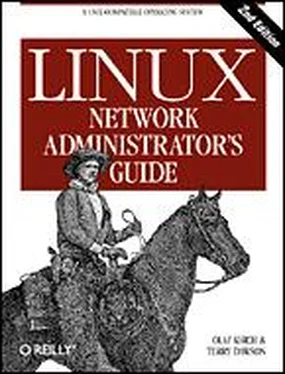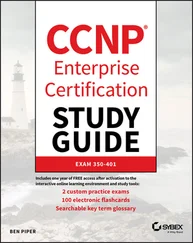Conventions Used in This Book
All examples presented in this book assume you are using a sh compatible shell. The bash shell is sh compatible and is the standard shell of all Linux distributions. If you happen to be a csh user, you will have to make appropriate adjustments.
The following is a list of the typographical conventions used in this book:
Italic
Used for file and directory names, program and command names, command-line options, email addresses and pathnames, URLs, and for emphasizing new terms.
Boldface
Used for machine names, hostnames, site names, usernames and IDs, and for occasional emphasis.
Constant Width
Used in examples to show the contents of code files or the output from commands and to indicate environment variables and keywords that appear in code.
Constant Width Italic
Used to indicate variable options, keywords, or text that the user is to replace with an actual value.
Constant Width Bold
Used in examples to show commands or other text that should be typed literally by the user.
WARNING:Text appearing in this manner offers a warning. You can make a mistake here that hurts your system or is hard to recover from.
We have tested and verified the information in this book to the best of our ability, but you may find that features have changed (or even that we have made mistakes!). Please let us know about any errors you find, as well as your suggestions for future editions, by writing to:
O'Reilly& Associates, Inc.
101 Morris Street
Sebastopol, CA 95472
1-800-998-9938 (in the U.S. or Canada)
1-707-829-0515 (international or local)
1-707-829-0104 (FAX)
You can send us messages electronically. To be put on the mailing list or request a catalog, send email to:
info@oreilly.com
To ask technical questions or comment on the book, send email to:
bookquestions@oreilly.com
We have a web site for the book, where we'll list examples, errata, and any plans for future editions. You can access this page at:
http://www.oreilly.com/catalog/linag2
For more information about this book and others, see the O'Reilly web site:
http://www.oreilly.com
This edition of the Networking Guide owes almost everything to the outstanding work of Olaf and Vince. It is difficult to appreciate the effort that goes into researching and writing a book of this nature until you've had a chance to work on one yourself. Updating the book was a challenging task, but with an excellent base to work from, it was an enjoyable one.
This book owes very much to the numerous people who took the time to proof-read it and help iron out many mistakes, both technical and grammatical (never knew that there was such a thing as a dangling participle). Phil Hughes, John Macdonald, and Erik Ratcliffe all provided very helpful (and on the whole, quite consistent) feedback on the content of the book.
We also owe many thanks to the people at O'Reilly we've had the pleasure to work with: Sarah Jane Shangraw, who got the book into the shape you can see now; Maureen Dempsey, who copyedited the text; Rob Romano, Rhon Porter, and Chris Reilley, who created all the figures; Hanna Dyer, who designed the cover; Alicia Cech, David Futato, and Jennifer Niedherst for the internal layout; Lars Kaufman for suggesting old woodcuts as a visual theme; Judy Hoer for the index; and finally, Tim O'Reilly for the courage to take up such a project.
We are greatly indebted to Andres Sepúlveda, Wolfgang Michaelis, Michael K. Johnson, and all developers who spared the time to check the information provided in the Networking Guide. Phil Hughes, John MacDonald, and Eric Ratcliffe contributed invaluable comments on the second edition. We also wish to thank all those who read the first version of the Networking Guide and sent corrections and suggestions. You can find a hopefully complete list of contributors in the file Thanks in the online distribution. Finally, this book would not have been possible without the support of Holger Grothe, who provided Olaf with the Internet connectivity he needed to make the original version happen.
Olaf would also like to thank the following groups and companies that printed the first edition of the Networking Guide and have donated money either to him or to the Linux Documentation Project as a whole: Linux Support Team, Erlangen, Germany; S.u.S.E. GmbH, Fuerth, Germany; and Linux System Labs, Inc., Clinton Twp., United States, RedHat Software, North Carolina, United States.
Terry thanks his wife, Maggie, who patiently supported him throughout his participation in the project despite the challenges presented by the birth of their first child, Jack. Additionally, he thanks the many people of the Linux community who either nurtured or suffered him to the point at which he could actually take part and actively contribute. "I'll help you if you promise to help someone else in return."
Besides those we have already mentioned, a large number of people have contributed to the Networking Guide, by reviewing it and sending us corrections and suggestions. We are very grateful.
Here is a list of those whose contributions left a trace in our mail folders.
Al Longyear, Alan Cox, Andres Sepúlveda, Ben Cooper, Cameron Spitzer, Colin McCormack, D.J. Roberts, Emilio Lopes, Fred N. van Kempen, Gert Doering, Greg Hankins, Heiko Eissfeldt, J.P. Szikora, Johannes Stille, Karl Eichwalder, Les Johnson, Ludger Kunz, Marc van Diest, Michael K. Johnson, Michael Nebel, Michael Wing, Mitch D'Souza, Paul Gortmaker, Peter Brouwer, Peter Eriksson, Phil Hughes, Raul Deluth Miller, Rich Braun, Rick Sladkey, Ronald Aarts, Swen Thüemmler, Terry Dawson, Thomas Quinot, and Yury Shevchuk.
Chapter 1. Introduction to Networking
The idea of networking is probably as old as telecommunications itself. Consider people living in the Stone Age, when drums may have been used to transmit messages between individuals. Suppose caveman A wants to invite caveman B over for a game of hurling rocks at each other, but they live too far apart for B to hear A banging his drum. What are A's options? He could 1) walk over to B's place, 2) get a bigger drum, or 3) ask C, who lives halfway between them, to forward the message. The last option is called networking .
Of course, we have come a long way from the primitive pursuits and devices of our forebears. Nowadays, we have computers talk to each other over vast assemblages of wires, fiber optics, microwaves, and the like, to make an appointment for Saturday's soccer match. [5] The original spirit of which (see above) still shows on some occasions in Europe.
In the following description, we will deal with the means and ways by which this is accomplished, but leave out the wires, as well as the soccer part.
We will describe three types of networks in this guide. We will focus on TCP/IP most heavily because it is the most popular protocol suite in use on both Local Area Networks (LANs) and Wide Area Networks (WANs), such as the Internet. We will also take a look at UUCP and IPX. UUCP was once commonly used to transport news and mail messages over dialup telephone connections. It is less common today, but is still useful in a variety of situations. The IPX protocol is used most commonly in the Novell NetWare environment and we'll describe how to use it to connect your Linux machine into a Novell network. Each of these protocols are networking protocols and are used to carry data between host computers. We'll discuss how they are used and introduce you to their underlying principles.
Читать дальше



![Andrew Radford - Linguistics An Introduction [Second Edition]](/books/397851/andrew-radford-linguistics-an-introduction-second-thumb.webp)








